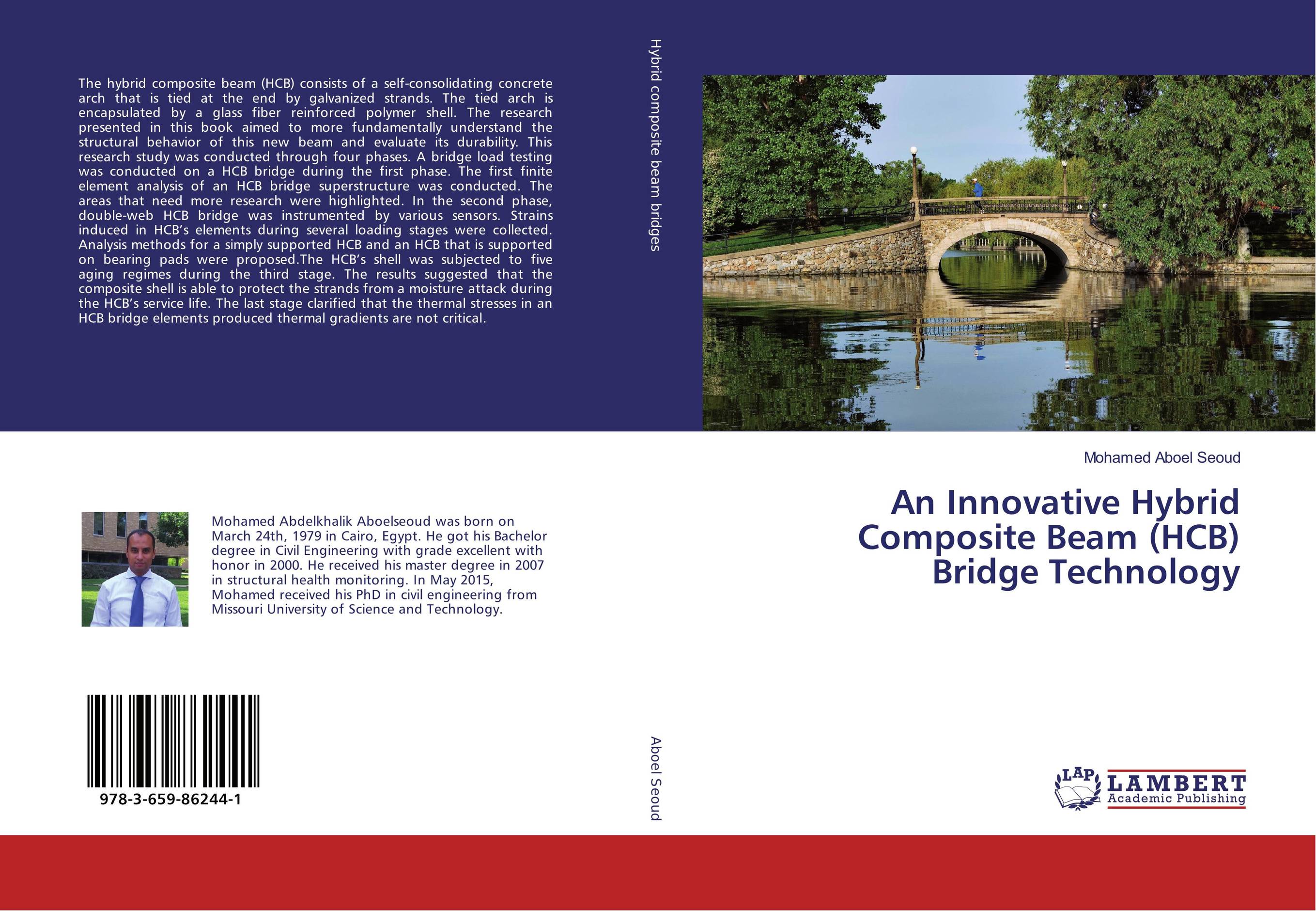| Поиск по каталогу |
|
(строгое соответствие)
|
- Профессиональная
- Научно-популярная
- Художественная
- Публицистика
- Детская
- Искусство
- Хобби, семья, дом
- Спорт
- Путеводители
- Блокноты, тетради, открытки
An Innovative Hybrid Composite Beam (HCB) Bridge Technology.

В наличии
| Местонахождение: Алматы | Состояние экземпляра: новый |

Бумажная
версия
версия
Автор: Mohamed Aboel Seoud
ISBN: 9783659862441
Год издания: 2016
Формат книги: 60×90/16 (145×215 мм)
Количество страниц: 372
Издательство: LAP LAMBERT Academic Publishing
Цена: 60426 тг
Положить в корзину
| Способы доставки в город Алматы * комплектация (срок до отгрузки) не более 2 рабочих дней |
| Самовывоз из города Алматы (пункты самовывоза партнёра CDEK) |
| Курьерская доставка CDEK из города Москва |
| Доставка Почтой России из города Москва |
Аннотация: The hybrid composite beam (HCB) consists of a self-consolidating concrete arch that is tied at the end by galvanized strands. The tied arch is encapsulated by a glass fiber reinforced polymer shell. The research presented in this book aimed to more fundamentally understand the structural behavior of this new beam and evaluate its durability. This research study was conducted through four phases. A bridge load testing was conducted on a HCB bridge during the first phase. The first finite element analysis of an HCB bridge superstructure was conducted. The areas that need more research were highlighted. In the second phase, double-web HCB bridge was instrumented by various sensors. Strains induced in HCB’s elements during several loading stages were collected. Analysis methods for a simply supported HCB and an HCB that is supported on bearing pads were proposed.The HCB’s shell was subjected to five aging regimes during the third stage. The results suggested that the composite shell is able to protect the strands from a moisture attack during the HCB’s service life. The last stage clarified that the thermal stresses in an HCB bridge elements produced thermal gradients are not critical.
Ключевые слова: Bridges, durability, Fiber Reinforced Polymer Composites, Finite element modeling, Hybrid composite beam, Full-scale bridge testing, Flexural analysis methods, Thermo-stuctural analysis



